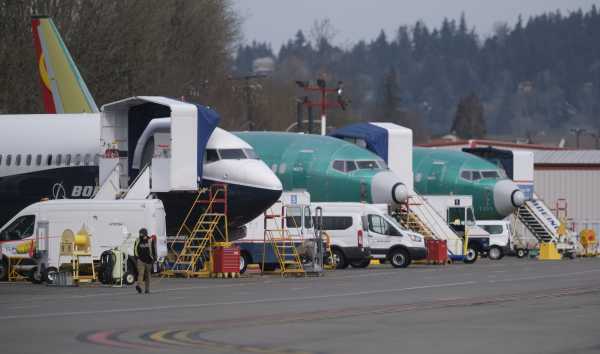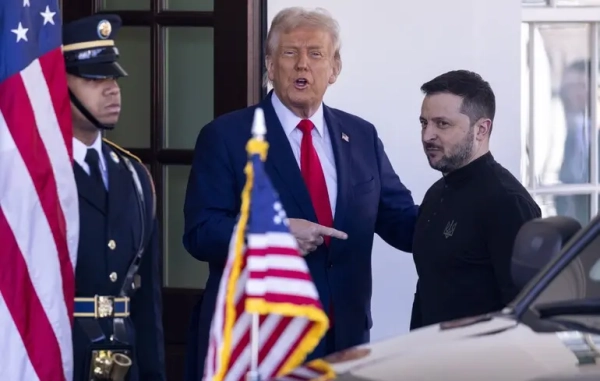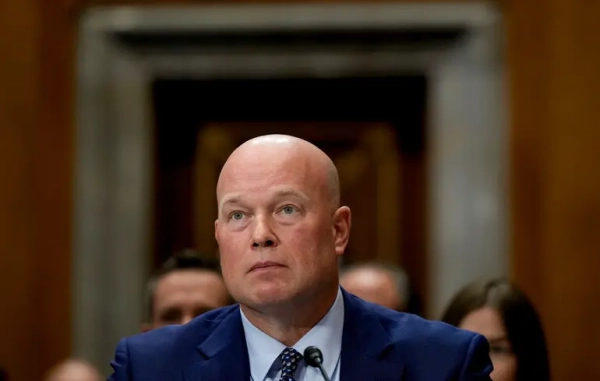
In a hurry to finish design and manufacture of the Boeing 737 MAX, the new plane that has crashed twice in the past six months, and get the plane to the runway, both Boeing and the Federal Aviation Administration appear to have rushed and cut corners — including not mentioning to pilots they had installed a new flight control system on the updated aircraft.
The result, according to a lengthy and damning Seattle Times investigation, was that the company’s safety analysis understated how much control the system could exert in flight and failed to account for how a pilot’s actions might influence the system’s behavior. After the first crash, the FAA learned the plane’s flight control system could adjust the plane’s horizontal tail, pushing down the plane’s nose, to a much greater degree than the initial documents stated.
The flight control system has now been implicated in two fatal plane crashes: the Ethiopian Airlines crash last week that killed 157 people and the Lion Air crash in October that killed 189. The 737 MAX has been grounded across the globe since last week — a decision the FAA was slow to make even as other countries blocked the plane from their airspace.
The Seattle Times’s investigation by Dominic Gates reveals how the FAA increasingly delegated inspections and other safety checks to the company itself and pushed inspectors to hand off even more of those tasks as the process continued, a practice that has become more common because of recent FAA budget cuts. As the New York Times reported recently, the agency created a program in 2005 that allowed manufacturers like Boeing to choose their own employees for critical work in certifying new planes were safe to fly.
The FAA and Boeing have pledged to implement a “software enhancement” for the flight control system by April. But scrutiny over what went wrong with the 737 MAX is only just beginning: The Department of Transportation is investigating the FAA, and a grand jury in DC is issuing subpoenas. All this is playing out as the FAA is without a permanent leader — a post Trump reportedly once wanted filled by his personal pilot.
Boeing wanted to keep costs down and get its plane in the air
The Seattle Times investigation offers an extremely detailed and technical review of the expansive role Boeing was allowed to take in certifying the safety of its own aircraft and getting the 737 MAX in the air.
This included the crucial decision not to train pilots on the new flight control system or mention it in flight manuals because it was only supposed to take control in extreme circumstances.
Pilots were only told about the system after the Lion Air crash in October, according to the Times, while an unnamed FAA safety engineer told Gates that the lack of knowledge about the MCAS system might have factored into the Indonesian crash.
The decision not to fully train pilots on MCAS was made partly as a cost-saving measure, the Times reported:
The crashes raise difficult questions about the Boeing-FAA relationship
The investigation lays bare the close relationship between the aircraft manufacturer and the FAA. According to the Times, as Boeing rushed to catch up with its competitor Airbus, managers pushed the agency’s technical experts to hasten their work. More and more work was delegated back to Boeing, Gates reported:
FAA regulatory oversight has worked this way for years, and the United States has had a sterling record of aviation safety for much of that time. But the recent crashes, and a fuller understanding of the role Boeing has played in regulating itself, have brought concerns that had simmered for years to the fore.
As Politico reported this week, lawmakers have fretted for a while about a “culture of coziness” between the FAA and the aircraft manufacturers. The agency has at times referred to the companies under its jurisdiction as “customers,” drawing the ire of former Rep. James Oberstar (D-MN) a decade ago.
Repeated warnings have been issued over the years in reports from federal oversight authorities about the close relationships between the FAA and Boeing specifically. From Politico:
Lawmakers have promised to look into the crash and the circumstances that led to it. A federal grand jury is reportedly taking up the case. More than 300 people are dead, and answers will be demanded to explain how a system with such a strong reputation for safety may have allowed such tragedies to happen.
Sourse: vox.com






